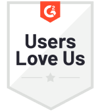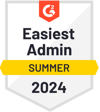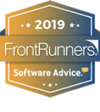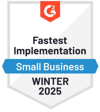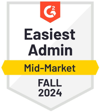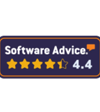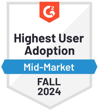What is an Applicant Tracking System? A Guide for SMBs

In today’s competitive job market, an ATS is not just a convenience but a necessity. It’s one of the core pillars of HR software that empowers SMBs to grow, allowing them to efficiently manage their workforce, attract top-tier talent and drive their business forward. Integrating an Applicant Tracking System in your recruitment process allows small businesses to maximise their resources while improving the quality of candidates brought forward to the interview stage and beyond.
As they’re such an important and versatile tool, there’s a lot to know about ATS systems and how they support the hiring process. In this article, we’re going to look at what features an applicant tracking system should have, as well as providing you with a step-by-step guide to choosing the right one for your business.
![]()
Why do SMBs need an Applicant Tracking System?
There are many benefits to using an ATS system within HR and recruiting processes for your SMB. From saving time sifting through CVs to improving the employee onboarding experience, you’ll notice the advantages almost immediately. Take a look at our guide to the core benefits of an Applicant Tracking System to delve deeper into the ways an ATS can help your business.
For small organisations, the adoption of an ATS is a strategic move that can have a significant impact on efficiency and growth. It supports hiring decisions that will benefit the business and promote successful expansion in line with your long-term goals. Other ways an ATS can support your business include:
- Saving time and money in the recruitment process
- Supporting compliance with UK laws regarding fair treatment of candidates
- Improving the recruitment and onboarding experience for candidates
- Boosting employee retention rates
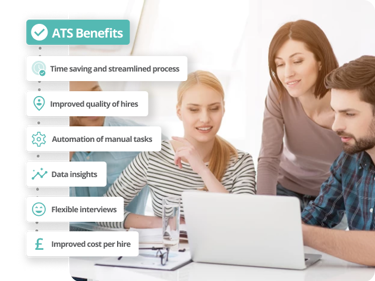
The different types of ATS
There are several different types of ATS systems, each of which has its own advantages.
What features should an ATS have?
When choosing the right Applicant Tracking System for your SMB, it's important to evaluate the features it offers to ensure that it aligns with your specific recruitment needs. A robust ATS should provide a comprehensive suite of tools to streamline your hiring process and improve overall efficiency.
Key features of an ATS system include:
- Job posting: An ATS should allow you to easily post jobs to online job boards, social media sites and other websites to expand your candidate reach.
- CV screening: Some systems are able to scan CVs for keywords and phrases relevant to the position to quickly identify qualified candidates.
- Interview scheduling: You should be able to schedule interviews with qualified candidates directly from the ATS interface, simplifying the coordination process.
- Applicant tracking: The core feature of course allows you to keep a centralised record of all applicants, as well as any interactions with your HR team.
- Candidate communication: From email templates and automated messaging functions, ATS solutions should offer built-in communication tools to facilitate timely interactions. This will help to support candidate engagement throughout the recruitment process.
- Reporting and analytics: An ATS should enable you to track key recruitment metrics and make data-driven decisions to improve the hiring process.
- Integration capabilities: More sophisticated ATS systems can seamlessly integrate with other HR tools, such as payroll software, for a more efficient workflow.
- Compliance management: Many systems include built-in processes that help you to stay compliant with relevant laws and regulations, such as employment laws and GDPR.
How to choose the right Applicant Tracking System
When deciding on the right ATS for your business, there are many different factors to consider. To ensure that you make an informed and strategic choice, we've outlined a comprehensive five-step process to guide you through the selection process.
1. Set your budget
Your budget is a key piece of information when it comes to choosing between the different Applicant Tracking Systems on the market. However, with so many ATS systems available at a variety of prices, it’s easy to find something that will suit your budget. As your SMB grows, you may be able to afford a more complex ATS in the future, so it might be worth considering options with built-in scalability.
2. Know the amount of users
The ATS model is often based on the number of users that you need, so it’s important to know how many people will require access to the system. Budget ATS options might only allow for a single user, which is ideal for SMBs where only one person will be managing the recruitment process. Again, scalability is a consideration here, and it’s worth noting that multi-user interfaces open up collaboration opportunities between departments, and with external recruiters.
3. Decide what you need from the system
Understanding your business’ unique requirements is essential, as not all Applicant Tracking Systems will offer the functionality you need. Consider asking yourself:
- What is the size of your candidate pool?
- Do you need integration with other HR tools
- What level of candidate communication and engagement do you require?
These questions will guide you towards a clearer understanding of your needs.
One lesser-known feature to consider is blind recruitment, a process that ensures unbiased hiring by concealing candidate identities during initial assessments. This feature can be invaluable for promoting diversity and inclusion within your hiring process, but isn’t standard in all ATS systems. If optimising inclusivity in your business is a key part of your growth plan, it’s worth looking into this feature.
4. Compare providers
Once you’ve got a better understanding of what you need from an ATS, it’s time to directly compare a few different providers to see which ones feel right for you. While it may be tempting to just go with the cheapest option, it’s well worth the time and effort to compare five or so providers in detail, making a note of the pros and cons of each, and exploring customer reviews.
5. Get your free trial
Almost all ATS providers offer a demo or free trial to give prospective customers a better idea of how it will benefit them, and whether it’s a good fit for their business. It’s well worth taking advantage of these demos and trials, as nothing beats the experience of using the software for yourself to get a good feel for its suitability.
While many Applicant Tracking Systems offer similar features and functionality, you may find one interface more user friendly than another. PeopleHR offers a generous free trial, backed by excellent reviews and dedicated customer support to answer any questions you have about making the most of your ATS.
Applicant Tracking Systems help SMBs grow and scale effortlessly
An Applicant Tracking System (ATS) isn’t just a type of software; it’s a strategic tool for any organisation looking to enhance their recruitment processes and drive growth. From streamlining and optimising the hiring process to helping to improve talent acquisition and retention, an ATS could be the catalyst for taking your business to the next level.
Now you know what an ATS is, the benefits it offers to SMBs, and how to choose the right solution for your requirements, it’s time to start comparing different providers. PeopleHR’s Applicant Tracking System, as part of our integrated HR software, offers a comprehensive suite of essential recruitment tools designed to help you bring in the right people to grow your business and meet your future goals. With a free trial and excellent customer support, you’ve got nothing to lose by taking a look at what PeopleHR can offer your small business.
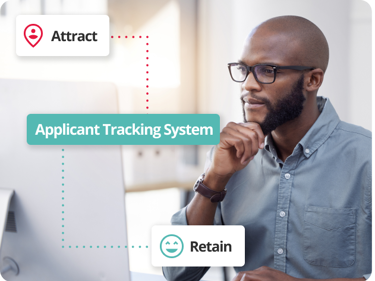
Related resources
We are trusted by experts

















